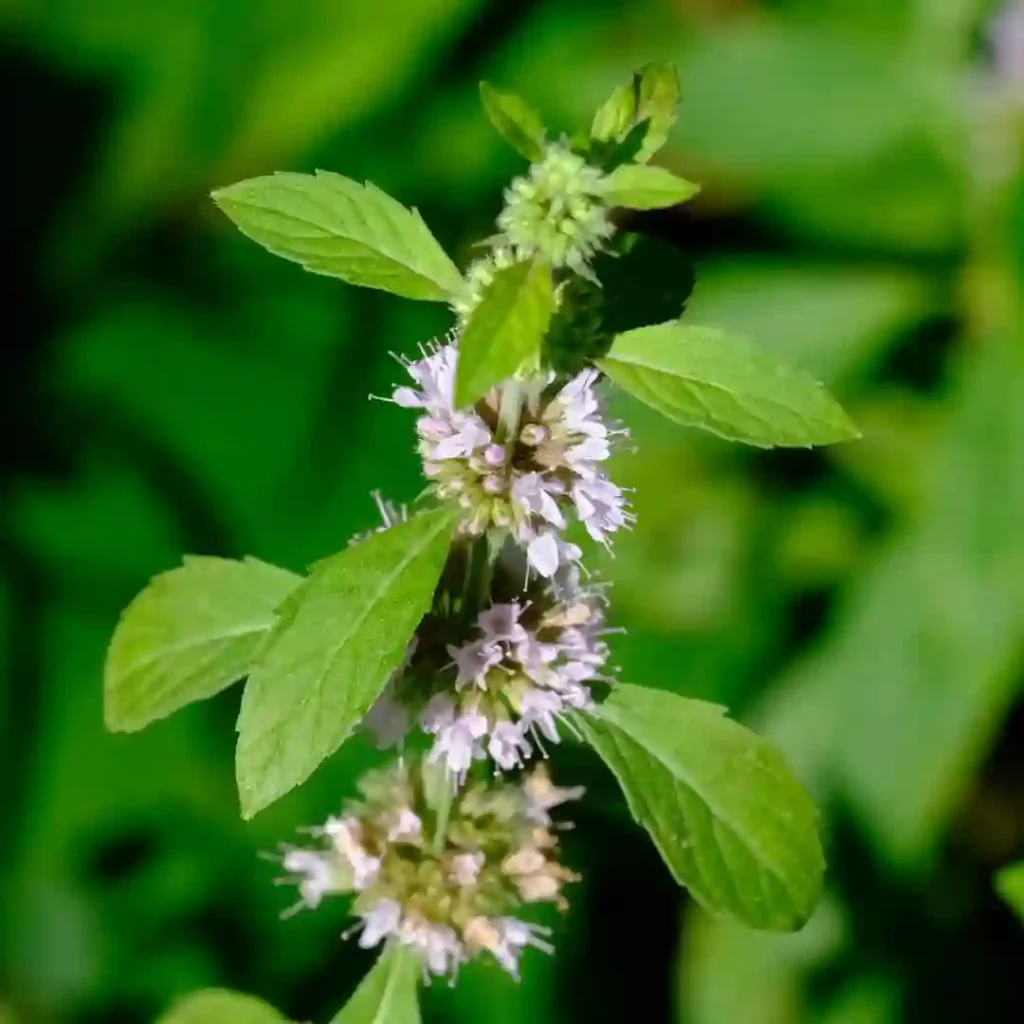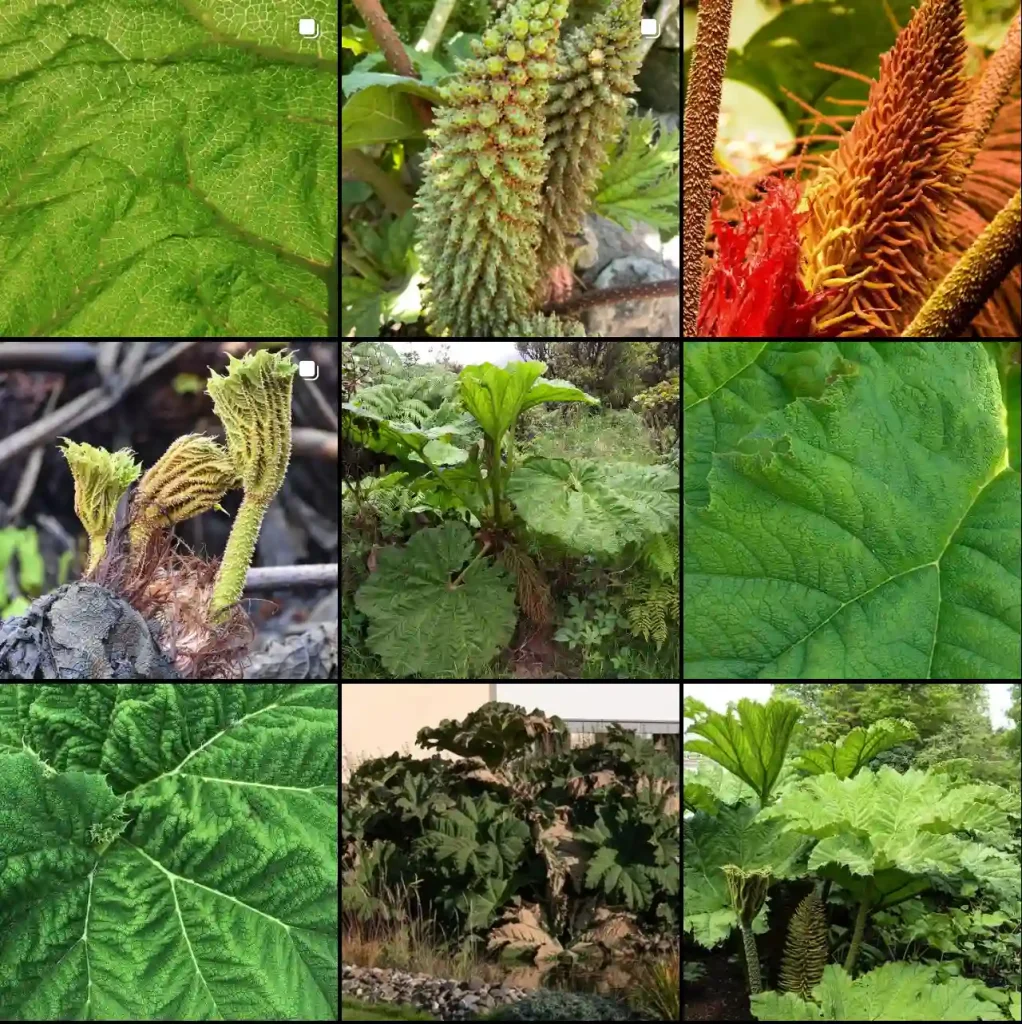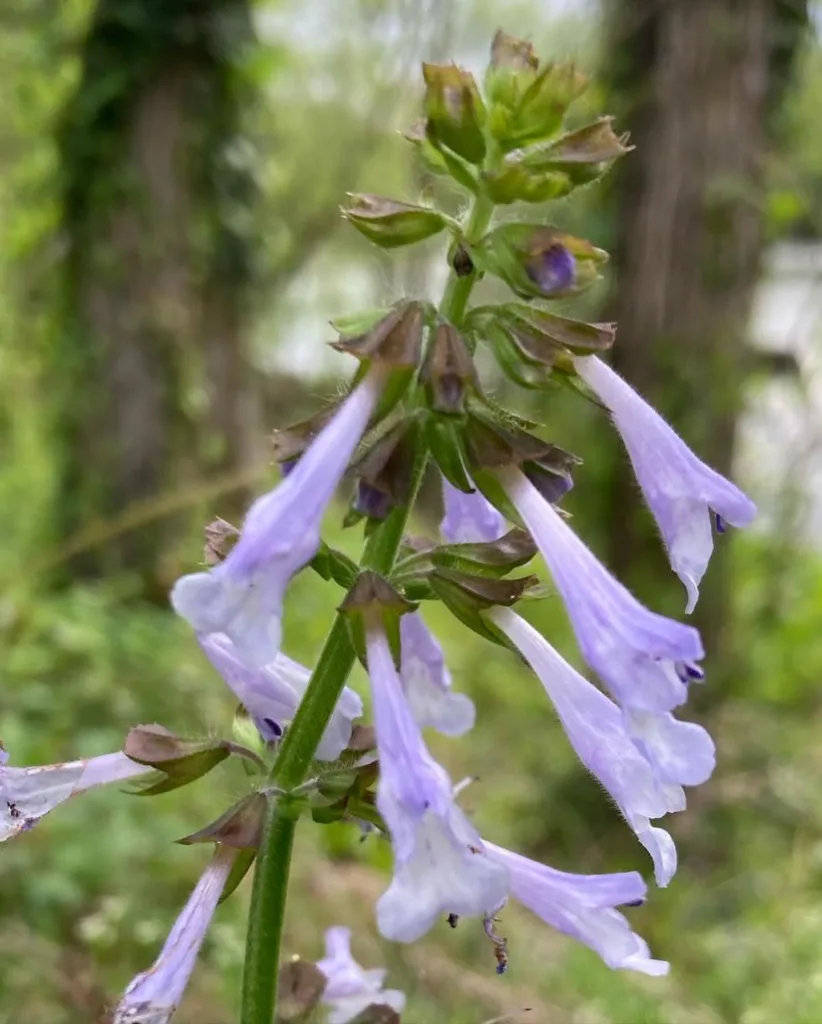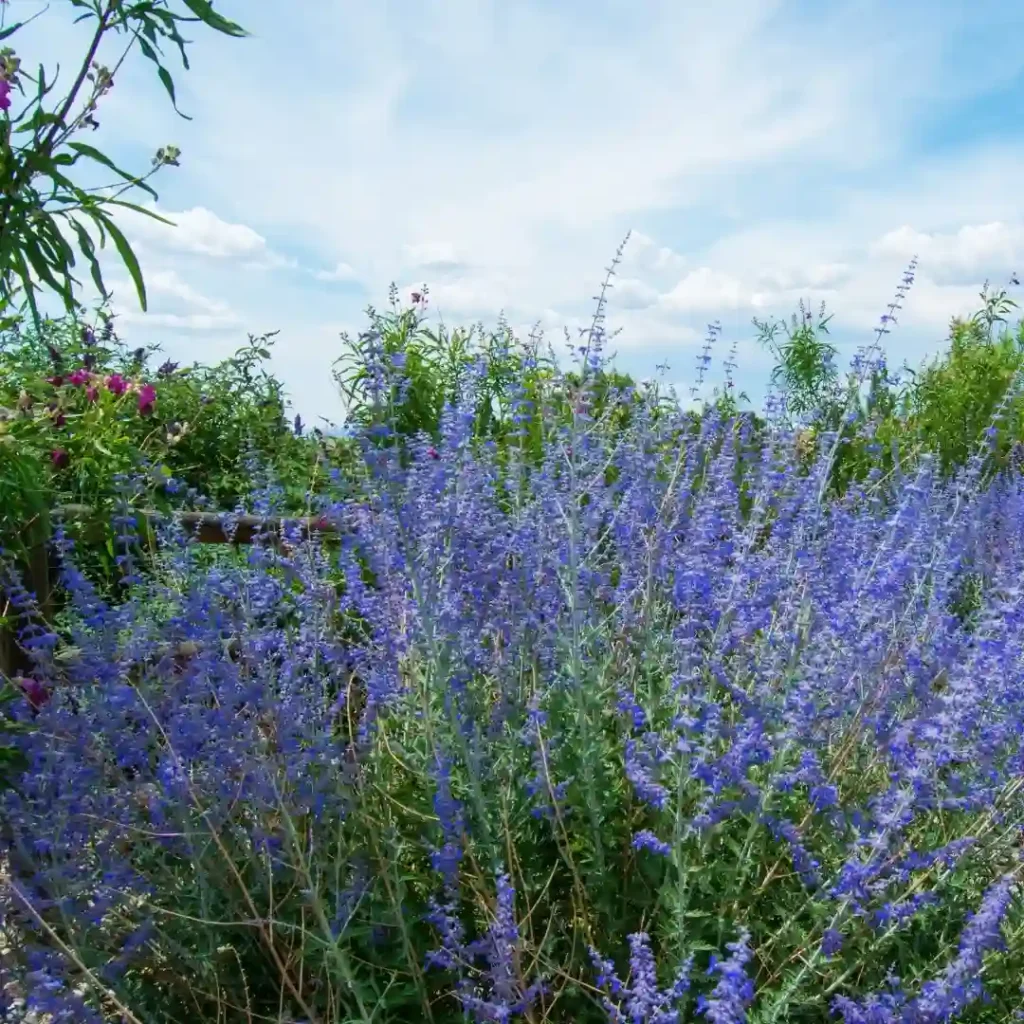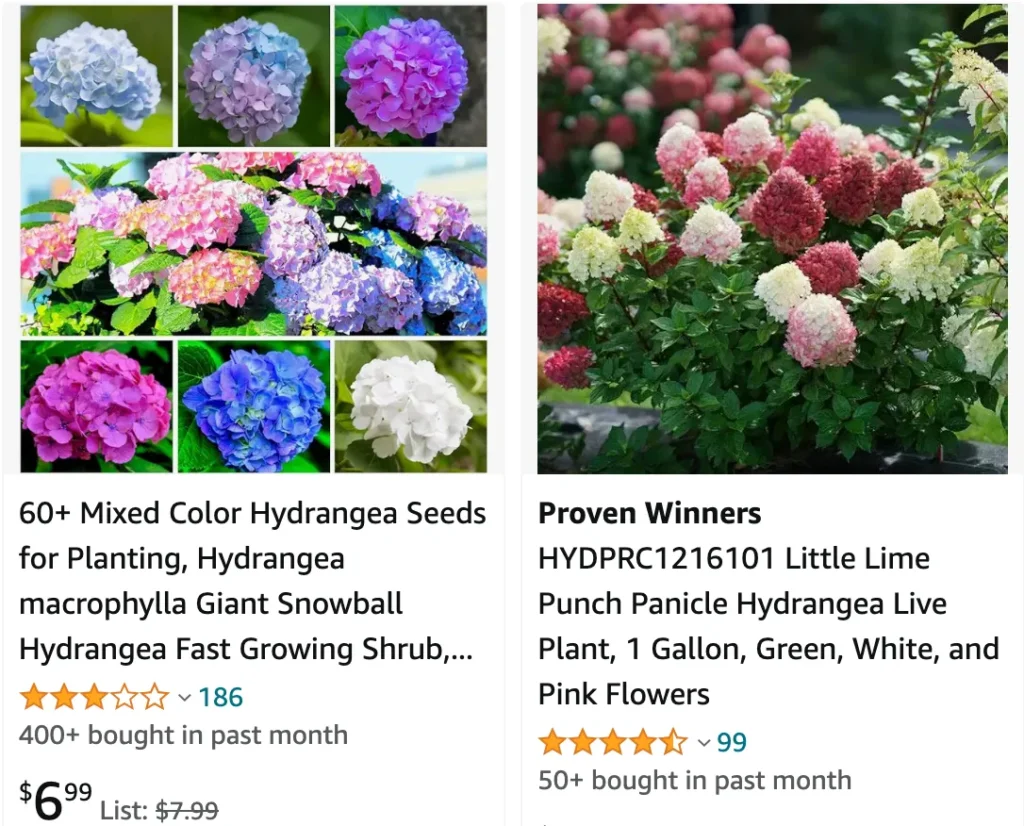
Hydrangeas: A Love Affair in Bloom
My name is Ferb Vu, and I have a confession to make: I’m utterly captivated by hydrangeas. These flowering shrubs, with their bountiful blooms and vibrant colors, have completely stolen my heart. There’s a certain magic about them, a captivating beauty that draws you in and leaves you wanting more.
Perhaps it’s their versatility that I adore. Hydrangeas thrive in a variety of climates and come in a stunning array of colors, from the purest white to the deepest blues and purples. Or maybe it’s their ability to transform a garden into a vibrant tapestry of colors, creating a symphony of hues that shift and change with the seasons. Whatever the reason, my fascination with these botanical wonders only deepens with time.
A Diverse Family of Beauties
The genus Hydrangea belong to the Hydrangeaceae family, boasts a rich diversity, with 100 species gracing gardens and landscapes across the globe. While their greatest diversity lies in East Asia, particularly China, Korea, and Japan, they can also be found in the Americas. Each species possesses its own unique charm, contributing to the captivating allure of the genus.
- Hydrangea acuminata Siebold & Zucc.
- Hydrangea albostellata Samain, Najarro & E.Martínez
- Hydrangea alternifolia Siebold
- Hydrangea × amagiana Makino
- Hydrangea amamiohsimensis (Koidz.) Y.De Smet & Granados
- Hydrangea ampla (Chun) Y.De Smet & Granados
- Hydrangea anomala D.Don
- Hydrangea arborescens L.
- Hydrangea arguta (Gaudich.) Y.De Smet & Granados
- Hydrangea aspera Buch.-Ham. ex D.Don Plant FAQs: Hydrangea Aspera
- Hydrangea asterolasia Diels
- Hydrangea barbara (L.) Bernd Schulz
- Hydrangea bifida (Maxim.) Y.De Smet & Granados
- Hydrangea breedlovei Samain, Najarro & E.Martínez
- Hydrangea bretschneideri Dippel
- Hydrangea caerulea (Stapf) Y.De Smet & Granados
- Hydrangea carroniae Samain & E.Martínez
- Hydrangea chungii Rehder
- Hydrangea cinerea Small
- Hydrangea coenobialis Chun
- Hydrangea corylifolia (Chun) Y.De Smet & Granados
- Hydrangea crassa (Hand.-Mazz.) Y.De Smet & Granados
- Hydrangea daimingshanensis (Y.C.Wu) Y.De Smet & Granados
- Hydrangea davidii Franch.
- Hydrangea densifolia (C.F.Wei) Y.De Smet & Granados
- Hydrangea diplostemona (Donn.Sm.) Standl.
- Hydrangea fauriei (Hayata) Y.De Smet & Granados
- Hydrangea febrifuga (Lour.) Y.De Smet & Granados
- Hydrangea fistulosa (G.H.Huang & G.Hao) U.B.Deshmukh & M.B.Shende
- Hydrangea glaucescens (Rehder) Y.De Smet & Granados
- Hydrangea gracilis W.T.Wang & M.X.Nie
- Hydrangea heteromalla D.Don
- Hydrangea hirsuta (Gagnep.) Y.De Smet & Granados
- Hydrangea hirta (Thunb.) Siebold
- Hydrangea hwangii J.M.H.Shaw
- Hydrangea hydrangeoides (Siebold & Zucc.) Bernd Schulz
- Hydrangea hypoglauca Rehder
- Hydrangea integrifolia Hayata
- Hydrangea involucrata Siebold
- Hydrangea jelskii Szyszył.
- Hydrangea kawagoeana Koidz.
- Hydrangea kwangsiensis Hu
- Hydrangea kwangtungensis Merr.
- Hydrangea lalashanensis S.S.Ying
- Hydrangea lingii G.Hoo
- Hydrangea linkweiensis Chun
- Hydrangea liukiuensis Nakai
- Hydrangea lobbii Maxim.
- Hydrangea longifolia Hayata
- Hydrangea longipes Franch.
- Hydrangea luteovenosa Koidz.
- Hydrangea macrocarpa Hand.-Mazz.
- Hydrangea macrophylla (Thunb.) Ser.
- Hydrangea mangshanensis C.F.Wei
- Hydrangea marunoi Tagane & S.Fujii
- Hydrangea mathewsii Briq.
- Hydrangea megalocarpa (Chun) J.M.H.Shaw
- Hydrangea minamitanii (H.Ohba) Yahara
- Hydrangea × mizushimarum H.Ohba
- Hydrangea moellendorffii Hance
- Hydrangea mollissima (Merr.) Y.De Smet & Granados
- Hydrangea nahaensis Samain & E.Martínez
- Hydrangea nebulicola Nevling & Gómez Pompa
- Hydrangea obtusifolia (Hu) Y.De Smet & Granados
- Hydrangea ofeliae Sodusta & Lumawag
- Hydrangea otontepecensis Samain & E.Martínez
- Hydrangea paniculata Siebold
- Hydrangea peruviana Moric. ex Ser.
- Hydrangea petiolaris Siebold & Zucc.
- Hydrangea pingtungensis S.S.Ying
- Hydrangea platyarguta Y.De Smet & Samain
- Hydrangea pottingeri Prain
- Hydrangea preslii Briq.
- Hydrangea quercifolia W.Bartram Plant FAQs: Oakleaf Hydrangea – Hydrangea Quercifolia
- Hydrangea radiata Walter
- Hydrangea robusta Hook.f. & Thomson
- Hydrangea sargentiana Rehder
- Hydrangea scandens (L.f.) Ser.
- Hydrangea schizomollis Y.De Smet & Granados
- Hydrangea seemannii L.Riley
- Hydrangea serrata (Thunb.) Ser.
- Hydrangea serratifolia (Hook. & Arn.) F.Phil.
- Hydrangea sikokiana Maxim.
- Hydrangea sousae Samain, Najarro & E.Martínez
- Hydrangea steyermarkii Standl.
- Hydrangea strigosa Rehder
- Hydrangea stylosa Hook.f. & Thomson
- Hydrangea taiwaniana Y.C.Liu & F.Y.Lu
- Hydrangea tapalapensis Samain, Najarro & E.Martínez
- Hydrangea tarapotensis Briq.
- Hydrangea tomentella (Hand.-Mazz.) Y.De Smet & Granados
- Hydrangea × versicolor (Fortune) J.M.H.Shaw
- Hydrangea viburnoides (Hook.f. & Thomson) Y.De Smet & Granados
- Hydrangea wallichii J.M.H.Shaw
- Hydrangea xanthoneura Diels
- Hydrangea yaoshanensis (Y.C.Wu) Y.De Smet & Granados
- Hydrangea yayeyamensis Koidz.
- Hydrangea × ytiensis (J.M.H.Shaw) J.M.H.Shaw
- Hydrangea yunnanensis Rehder
- Hydrangea zhewanensis P.S.Hsu & X.P.Zhang
How to revive hydrangea?
Hydrangeas can be a bit dramatic! One day they’re these full, beautiful blooms and the next they’re drooping all over the place. I’ve found that sometimes all they need is a good, deep drink. I’ll trim the bottom of the stems at an angle and stick them in a bucket full of cool water for a few hours. It’s honestly amazing how quickly they perk back up. Other times, when it’s really hot outside, they get stressed no matter how much I water them. If that happens, I’ll bring the pots inside or move them to a shadier spot until they seem happier.
How to pronounce hydrangea?
Honestly, pronouncing hydrangea is always a bit of a challenge for me! It’s one of those words that looks way different than it sounds. I say it as “hi-DRAYN-juh”. I always have to slow down and make sure I hit each syllable. It always amuses me how such a lovely flower can have such a tricky name!
Is hydrangea a perennial?
Absolutely! Hydrangeas are definitely perennials, which I love because it means they keep coming back year after year. I planted my first hydrangea bush years ago, and it’s still going strong! Of course, they go dormant in the winter and lose their leaves, but all that lush, green growth returns and they explode with those big, colorful blooms each spring. It’s always my favorite time of year in the garden when the hydrangeas start to show their color.
How to deadhead hydrangea?
I always find deadheading hydrangeas to be a satisfying task. When those beautiful blooms start to fade, I find a nice pair of sharp shears and get to work. I trace the spent flower stem down to the first set of healthy-looking leaves, then make a clean cut just above them. It gives the plant a tidier appearance and encourages it to keep blooming. Sometimes, especially with those varieties that rebloom all season, deadheading feels like it takes forever, but it’s worth the effort for those gorgeous flowers!
Is my hydrangea dead or dormant?
That’s always the big question with hydrangeas, isn’t it? They can look so lifeless in the winter! The best way I’ve found to tell is the “scratch test”. I’ll gently choose a stem and scratch off a bit of the bark. If I see green underneath, that means the plant is still alive, just dormant. But if it’s brown and dry all the way through, that’s a bad sign. Sometimes I have to be a bit patient – I’ll give a questionable hydrangea a few weeks into spring to see if any new growth pops up before making a final decision.
Why is my hydrangea turning brown?
There could be a few reasons why my hydrangea is turning brown. Lately, it’s been feeling the heat more than usual, so I’m worried it might be getting too much sun. I know sometimes the leaves get crispy and brown around the edges if they’re baking in the afternoon sun. On the other hand, maybe I haven’t been watering it enough. Especially with these hot days, it’s easy for the soil to dry out before I realize it. I’ll need to check the moisture level around the base of the plant and give it a good soak if the ground feels dry. Hopefully, with a little extra shade and water, my hydrangea will perk up again!
Will a dead hydrangea come back?
Sometimes, it’s incredibly difficult to tell if a hydrangea is truly dead or just very, very dormant! If the roots are still alive, there’s always a chance it can make a comeback. I’ll usually keep an eye on those dried-up stems just in case there are new shoots popping up around the base of the plant. I’ve even had springs where my hydrangea didn’t seem to do anything until much later in the season. If the branches are brittle and dry all through, unfortunately, it’s time to start thinking about a replacement.
How big does a hydrangea tree get?
I’m fascinated by hydrangea trees! They have such a beautiful shape and those giant flower clusters are stunning. From what I’ve learned, the size really depends on the variety. Some stay pretty compact, only reaching a few feet in height and width. Others can truly grow into small trees, easily hitting 10 or 15 feet tall! I’d love to plant one in my yard, but I’ll definitely need to do some research to find a variety that suits the space I have.
How to plant hydrangea seeds?
To be completely honest, I’ve never tried planting hydrangea seeds! From what I understand, it can be quite a lengthy process and the success rate isn’t always guaranteed. Usually, I’ll just pick up a healthy-looking hydrangea plant from the nursery and get instant gratification when it blooms. Of course, I’m always up for a challenge, so maybe I’ll research it a bit more and give it a try next year. The idea of growing such beautiful flowers from tiny seeds definitely has its appeal!
How to transplant a hydrangea?
Transplanting hydrangeas can be a bit nerve-wracking, but I’ve definitely learned a few things from experience. First things first, timing is key! I always wait until fall, when the plant is going dormant, to move them. That way, they have all winter to settle into their new home before spring arrives.
The key is to disturb the roots as little as possible. I dig a nice wide hole in the new spot, bigger than the root ball, and loosen up the soil. Then, I carefully dig around the hydrangea in its current location, keeping as much soil around the roots as possible. It can be a heavy job, so sometimes I enlist a friend to help me lift the plant. Once it’s settled in the new hole, I fill it back in with soil and water it really well to help everything settle. With a little care and some attention, my hydrangeas have always bounced back beautifully after transplanting.
When can i put my potted hydrangea outside?
That depends on where I live and how hardy my hydrangea variety is. Usually, I wait until the danger of frost has passed in the spring. I’ll keep an eye on the weather forecast and slowly acclimate it to outdoor life. Maybe I’ll start by setting the pot outside in a sheltered spot for a few hours each day, gradually increasing the time over a week or two. This helps my hydrangea adjust to the change in temperature and sunlight without getting shocked.
Do rabbits eat hydrangea?
Unfortunately, yes! Rabbits seem to find hydrangeas quite tasty, which can be a real frustration for gardeners like me. Last year, I had some lovely new hydrangea bushes nearly devoured by some hungry bunnies. I’ve heard mixed opinions on whether hydrangea is really bad for rabbits, but I’d prefer not to risk it. Now, I either plant my hydrangeas in raised beds to keep them out of reach or use a rabbit repellent spray to deter the furry munchers.
How deep are hydrangea roots?
Hydrangea roots are surprisingly shallow! They tend to spread outwards, rather than downwards, staying fairly close to the surface. That’s why it’s so important to water them regularly, especially during hot, dry periods. The top layer of soil dries out quickly, so the roots can get thirsty. I also like to put down a layer of mulch around the base of my hydrangea plants – it helps keep the soil cool and retains moisture, making my life easier, and the hydrangeas happier!
Why are my hydrangea leaves curling?
Curling leaves on my hydrangeas always make me worry. It could be a few different things. The first culprit that comes to mind is usually underwatering. Hydrangeas are thirsty plants, and if they get too dry, their leaves might curl as a defense mechanism. I’ll check the soil and give it a good soak if it feels arid. Sometimes, the heat can also be a problem. If it’s a particularly scorching day, I might try moving a potted hydrangea to a shadier spot or giving them some extra water to cope. There’s also the chance of a pest infestation – I’ve heard aphids can cause leaf curling, so I’ll check those leaves closely!
Does hydrangea smell good?
It depends on the variety of hydrangea! Some, like the classic bigleaf hydrangeas that come in those gorgeous blue and pink shades, don’t really have a noticeable fragrance. Others, like the panicle hydrangeas, can have a lovely sweet scent. There’s a variety called “PeeGee” that’s particularly known for its beautiful flowers and its fragrance. I love brushing past my hydrangea bush and getting a burst of that honey-like scent – it adds something really special to the garden!
How to make a hydrangea wreath?
Making a hydrangea wreath is such a fun and rewarding project! I love using the beautiful blooms from my garden to create something decorative and unique. Here’s what I like to do:
- Gather Supplies: A grapevine wreath base, fresh hydrangea blooms, floral wire, and a pair of gardening shears.
- Prep the Blooms: I carefully cut my hydrangea blooms, leaving a few inches of stem.
- Start Attaching: I start by attaching a few hydrangea blooms to the grapevine wreath using the floral wire. I wrap the wire tightly around the stems and base, making sure everything feels secure.
- Fill it In: I continue adding clusters of hydrangea blooms around the wreath, trying to cover the grapevine base completely. I alternate colors and sizes if I have different varieties, focusing on a full and lush look.
- Finishing Touches: Once I’m happy with the design, I might add in some dried grasses, berries, or other natural embellishments I find around the garden to give it some extra charm.
What does a hydrangea symbolize?
Hydrangeas have such rich symbolism, which makes them even more special to me! One of the most common meanings is heartfelt emotion, gratitude, and understanding. That’s why they’re often used in bouquets or as gifts when you want to express those deep feelings. In some cultures, especially Japan, hydrangeas are associated with apologies and the desire to make amends.
Interestingly, some older interpretations were less positive. During the Victorian era, hydrangeas could be seen as a symbol of boastfulness or vanity. Of course, the meaning of flowers is always a bit subjective; I like to focus on those positive emotions and the beauty hydrangeas bring to my garden!
What eats hydrangea leaves?
Sadly, several critters seem to enjoy munching on hydrangea leaves! The most common culprits are:
- Deer: If you live in an area with deer, they’ll happily snack on your hydrangea blooms and leaves.
- Rabbits: Those fluffy-tailed friends aren’t picky, and hydrangeas are often considered a delicacy.
- Slugs and Snails: These slimy garden dwellers leave tell-tale ragged holes and slime trails on your hydrangea leaves.
- Insects: Japanese beetles, leaftier moths, aphids, and other insects can also cause damage to hydrangea foliage.
It’s a bit frustrating, but I’ve learned there are ways to protect my hydrangeas from becoming someone’s buffet! This usually involves a mix of deterrents (like fencing or repellents), keeping an eye out for signs of pests, and possibly using insecticides if the problem gets out of hand.
What is the smallest hydrangea?
There are a few contenders for the title of smallest hydrangea. Here are a couple of popular dwarf varieties:
- Little Lime Hydrangea (Hydrangea paniculata ‘Little Lime’): This is a super compact variety of panicle hydrangea, reaching only 3-5 feet tall and wide. It’s famous for its lime green flowers that transform into pink as the season progresses.
- Fire Light Tidbit Hydrangea (Hydrangea paniculata ‘Fire Light Tidbit’): This one is even smaller, topping out at about 2-3 feet tall and wide. It features stunning flower clusters that start out white and turn a deep, rich pink.
- Bobo Hydrangea (Hydrangea paniculata ‘Bobo’): Another adorable dwarf panicle hydrangea reaching about 3 feet tall, smothered in huge white blooms during the summer.
These small varieties are perfect for tight spaces, containers, and adding some delightful floral charm to borders and walkways!
Why is my hydrangea turning green?
It’s perfectly normal for hydrangea blooms to turn green as they age! This is simply how the flowers naturally mature. The vibrant pinks, blues, or whites fade over time and the underlying green pigment of the sepals (which are the petal-like structures) becomes more noticeable.
Sometimes, certain varieties that are normally quite vibrantly colored might turn green prematurely. This could be due to extremely hot weather or too much direct sunlight, which can cause the blooms to fade faster.
However, if a hydrangea is consistently green when blooming, even at the start of the season, it could mean a few things:
- Variety: Some hydrangea varieties are naturally green. “Limelight” hydrangeas are a great example.
- Soil pH: For classic mophead or bigleaf hydrangeas (Hydrangea macrophylla), neutral soil pH will sometimes produce greenish blooms instead of vibrant pinks or blues.
It’s a good idea to check if you have a variety that naturally blooms green. But if your hydrangea used to bloom in bright colors and is now consistently green, it might be worth investigating the conditions around it!
Are coffee grounds good for hydrangea plants?
Yes, coffee grounds can be good for hydrangea plants, but there are some things to keep in mind:
- Acidity: Coffee grounds are slightly acidic, which can be beneficial for hydrangeas that prefer more acidic soil. This is particularly helpful if you want your hydrangeas to bloom blue.
- Nutrients: Coffee grounds add some nitrogen, phosphorus, and potassium to the soil, which are essential nutrients for plant growth. They also improve soil structure and drainage.
- Moderation is Key: Too much of a good thing isn’t always better. Sprinkle used coffee grounds around the base of your hydrangeas occasionally and gently work them into the soil. Overdoing it might make the soil too acidic or create an imbalance of nutrients.
Overall, coffee grounds can be a useful addition to your hydrangea care routine, especially if you like the idea of using natural materials in your garden!
Are hydrangea toxic to dogs?
Unfortunately, yes, hydrangeas are considered toxic to dogs. All parts of the plant contain a compound called cyanogenic glycoside, which is most concentrated in the buds and leaves. If a dog ingests enough hydrangea, they can experience symptoms like:
- Vomiting
- Diarrhea
- Depression
- Lethargy
In severe cases, though rare, cyanide poisoning can occur, which can be much more serious. It’s always best to keep dogs away from hydrangea bushes. If you suspect your dog has eaten any part of a hydrangea plant, it’s important to contact your veterinarian for advice right away.
Can hydrangea grow indoors?
Absolutely! Hydrangeas can make lovely indoor plants with the right care. Here’s what you need to keep in mind:
- Variety: Choose a compact hydrangea variety suited for containers. Mophead hydrangeas (Hydrangea macrophylla) are a popular choice for indoors.
- Light: Hydrangeas love bright, indirect light. A spot near an east or south-facing window is ideal, but avoid harsh, direct sunlight that can burn the leaves.
- Water: Keep the soil consistently moist, but not soggy. Water deeply and allow the top layer of soil to dry slightly between waterings.
- Humidity: Hydrangeas enjoy a bit of humidity. You can mist the leaves occasionally or place the pot on a tray of pebbles with water.
- Bloom Encouragement: For reblooming, indoor hydrangeas need a period of dormancy with cooler temperatures and lower light. You can often bring a potted hydrangea outdoors for winter to allow this rest period.
With a bit of attention, you can absolutely enjoy the beauty of hydrangeas inside your home!
How to protect hydrangea from deer?
Protecting those beautiful hydrangea blooms from hungry deer can be a challenge! Here are a few strategies I’ve used with varying success:
Physical Barriers
- Fencing: A tall fence around your garden is the most effective deterrent, but not always practical or aesthetically pleasing.
- Netting: Draping lightweight deer netting over individual hydrangea bushes can be a good temporary solution. It’s especially effective when those new buds are starting to emerge.
- Individual plant protection: Sometimes I’ll use chicken wire shaped into a cylinder around smaller hydrangeas. It’s visually less appealing, but it can do the trick.
Repellents:
- Commercial sprays: These come with various scents and tastes that deer find off-putting. You’ll need to reapply regularly, especially after rainfall.
- Homemade concoctions: There are many DIY recipes out there using ingredients like eggs, garlic, or hot pepper. These might be less effective, but they’re an easy and natural option.
Other Tricks:
- Motion-activated sprinklers: A sudden burst of water can startle deer and discourage them from lingering.
- Plant unappealing companions: Plant things deer dislike nearby, like lavender, ferns, or ornamental grasses to mask your yummy hydrangea.
- Give them alternatives: This might sound counterintuitive, but if you have space, planting a few deer-favorites away from your hydrangeas might tempt them away.
Unfortunately, there’s no foolproof method, and determined deer can be difficult to discourage completely. It’s often best to combine a few methods for the best chance at success!
What zone does hydrangea grow in?
Most hydrangeas are quite hardy and grow well in a wide range of USDA Hardiness Zones, usually zones 3-9. However, specific cold and heat tolerances can vary a bit depending on the type of hydrangea:
- Bigleaf hydrangeas (Hydrangea macrophylla): These are the classic mophead and lacecap hydrangeas. They typically thrive in zones 5-9.
- Smooth hydrangeas (Hydrangea arborescens): Known for their large, white blooms (‘Annabelle’ is a popular variety), they’re some of the hardiest, growing well in zones 3-9.
- Panicle hydrangeas (Hydrangea paniculata): These boast cone-shaped blooms and are also very cold hardy, thriving in zones 3-8.
- Oakleaf hydrangeas (Hydrangea quercifolia): These have unique oak-shaped leaves and are best suited to zones 5-9.
It’s always a good idea to double-check the hardiness zone recommendation for the specific hydrangea variety you want to plant to ensure it’s a good fit for where you live!
How to care for hydrangea in fall?
Fall is a time to prepare your hydrangeas for the upcoming winter and set the stage for beautiful blooms next season. Here’s my fall hydrangea care routine:
- Watering: Keep watering regularly, especially if the weather is still warm and dry, but gradually taper off as the temperatures cool. You want the soil to be consistently moist, but not waterlogged.
- Mulch: A layer of mulch (2-3 inches) around the base of the plant helps insulate the roots and retain moisture in the soil. Wood chips, shredded leaves, or pine needles all work well.
- Pruning (Depends on Variety):
- Bigleaf, Oakleaf Hydrangeas: Leave these mostly alone in the fall. They bloom on old wood (last year’s growth), so pruning now can cut off those potential flower buds. In the spring, after the worst frost danger has passed, you can remove dead or crossing branches.
- Smooth, Panicle hydrangeas: These bloom on new wood (this year’s growth) so you can prune them in the fall or early spring.
- Protection: In harsher climates (zones 5 and below), consider providing winter protection for more delicate varieties, especially if they’re newly planted. You can wrap the bushes with burlap, create a chicken wire cage filled with leaves, or simply pile extra mulch around the base for insulation.
Remember, the specific needs might vary slightly based on your climate and hydrangea variety, so it’s always a good idea to double-check with a local resource or nursery!
How to collect hydrangea seeds?
Collecting hydrangea seeds is a fun way to potentially grow new plants, although the success rate can vary. Here’s how to do it:
- Wait for Flowers to Fully Fade: Don’t try harvesting seeds when the flowers are still colorful. Wait until the blooms have faded, dried out, and turned brown or papery. This usually happens in late summer or fall.
- Cut the Flower Heads: Using sharp shears, carefully cut the entire dried flower head off the stem.
- Store in a Dry Place: Place the flower heads in a paper bag or on a paper towel in a cool, dry place for a few weeks. This allows them to fully dry out and makes it easier to release the seeds.
- Shake and Separate: After a few weeks, shake the dried flower heads vigorously inside a paper bag or over a sheet of paper. The tiny, dust-like seeds should start to fall out. You might need to gently crush the dried flower material to release all the seeds.
- Clean Up: There will be a lot of chaff (dried flower pieces) mixed in with the seeds. You can try to carefully separate them by hand or use a gentle breeze to blow away the lighter chaff.
- Store Properly: Store the collected seeds in a paper envelope in a cool, dry place until you’re ready to sow them.
Important Considerations:
- Not All Will Germinate: Hydrangea seeds can have low germination rates, so don’t be discouraged if you don’t get a ton of new plants.
- Variety Matters: Seedlings might not always resemble the parent plant, especially with hybrid hydrangeas.
- Patience is Key: It takes time and patience to grow hydrangeas from seed. It can be a couple of years before they’re big enough to bloom.
If you enjoy a challenge and are curious about the process, collecting hydrangea seeds can be a fun project!
More Than Just a Pretty Face
While their beauty is undeniable, hydrangeas offer more than just visual appeal. They play a vital role in the ecosystem, providing nectar and pollen for pollinators such as bees and butterflies. Their strong root systems also help to stabilize soil and prevent erosion.
Beyond their ecological importance, hydrangeas hold cultural significance in many societies. In Japan, they are associated with gratitude and heartfelt emotion, while in other cultures, they symbolize abundance, grace, and beauty.
The Magic of Color Change
One of the most fascinating aspects of hydrangeas, particularly Hydrangea macrophylla, is their ability to change color. This captivating phenomenon is due to the presence of anthocyanin pigments in the flowers and the influence of aluminum ions in the soil.
In acidic soils, aluminum is more readily available to the plant, resulting in blue or purple blooms. Alkaline soils, on the other hand, limit aluminum uptake, leading to pink or red flowers. This unique characteristic allows gardeners to influence the color of their hydrangeas by adjusting the soil pH.
A Lifelong Passion
My love affair with hydrangeas continues to blossom. I find myself constantly drawn to their beauty, their versatility, and their ability to transform any space into a haven of tranquility. Whether I’m admiring their vibrant colors in a garden, studying their intricate blooms up close, or simply enjoying their presence in a vase, hydrangeas never cease to amaze and inspire me.
They are a reminder of the beauty and wonder that exists in the natural world, a testament to the power of nature to uplift and inspire. And as I continue to explore the vast and diverse world of hydrangeas, I know that my fascination with these captivating plants will only grow stronger with time.
If i die, water my plants!
